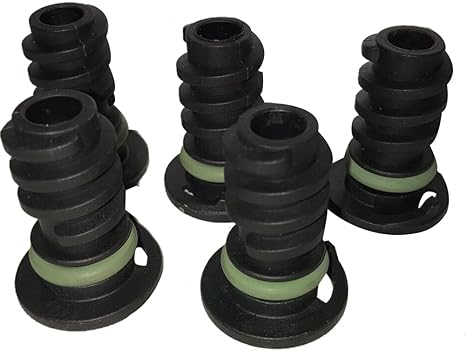Replacing Dexter Axle Seals A Step-by-Step Guide for Effective Maintenance and Repair
A Comprehensive Guide to Replacing Dexter Axle Seals
If you own a trailer or vehicle equipped with Dexter axles, understanding the importance of axle seal maintenance is crucial for ensuring the longevity of your equipment. The axle seals play a vital role in keeping grease within the hub assembly, preventing contaminants from entering, and protecting your wheel bearings. Over time, these seals can wear out, leading to potential issues such as grease leaks, bearing failure, and even axle damage. In this article, we will guide you through the process of replacing Dexter axle seals, ensuring your trailer or vehicle remains in optimal condition.
Recognizing the Signs of Wear
Before jumping into replacement, it’s essential to recognize when your axle seals need attention. Common signs include
1. Grease Accumulation If you notice grease leaking from the wheel hub, it’s a clear indication that the seal has failed. 2. Overheating Worn seals can cause bearings to overheat, leading to unusual noises or vibrations when you’re driving. 3. Contamination If dirt, water, or debris enters the axle housing, it can compromise the integrity of the bearings, indicating a potential seal failure.
Tools and Materials Required
Before starting the replacement process, gather the following tools and materials
- New Dexter axle seals (specific to your axle model) - Wheel bearing grease - Socket set - Wrench set - Hammer (or a seal installer tool) - Pliers - Flathead screwdriver - Clean cloths for wiping surfaces - Safety glasses and gloves
Step-by-Step Replacement Process
1. Prepare Your Vehicle/Trailer Start by parking your vehicle on a level surface and engaging the parking brake. Use jack stands for added safety to lift the trailer or vehicle high enough to access the wheels comfortably.
dexter axle seal replacement

2. Remove the Wheel Take off the lug nuts using a tire iron or socket wrench, and remove the wheel. Set it aside on a clean surface.
3. Access the Hub Assembly If your axle has a dust cap, carefully pry it off using a flathead screwdriver. Remove the cotter pin and nut to access the hub. Be cautious not to damage any components during this process.
4. Remove the Old Seal Once you have access, use the pliers and flathead screwdriver to carefully pry out the old axle seal. Be cautious to avoid scratching the mating surfaces of the hub or axle, as this can lead to new seal failure.
5. Clean the Area Wipe the hub and axle surfaces clean using a cloth. Remove any debris or old grease to ensure a smooth installation of the new seal.
6. Install the New Seal Apply a thin layer of grease to the new seal’s outer edge. This helps it slide into place more easily and ensures a better seal. Carefully tap the new axle seal into place using a hammer or a seal installer tool. Make sure it is seated evenly and flush with the hub.
7. Reassemble the Hub Replace the hub and secure it by reattaching the bearing nut and cotter pin. Ensure that everything is torqued to the manufacturer’s specifications. Then, replace the dust cap securely.
8. Reattach the Wheel Place the wheel back onto the hub, hand-tighten the lug nuts, and then use a torque wrench to tighten them to the appropriate specifications.
9. Testing Once everything is reassembled, lower the vehicle or trailer and take a short test drive. Listen for any unusual noises and check for leaks to confirm that the new seal is working properly.
Final Thoughts
Regular maintenance and timely replacement of your Dexter axle seals are essential for maintaining the performance and safety of your trailer or vehicle. By following this guide, you can easily replace the axle seals and avoid costly repairs down the line. Always remember to consult your owner’s manual for specific instructions related to your axle type, and don’t hesitate to seek professional help if you’re unsure about any steps in the process. Proper care and attention can extend the life of your axles and keep your travels worry-free.
-
Simplifying Oil Changes: A Comprehensive Guide to Oil Drain Plugs and Their Variants
News Aug.04,2025
-
Mastering Oil Drain Maintenance: Solutions for Stripped, Worn, and Upgraded Oil Plugs
News Aug.04,2025
-
Fixing Oil Pan Plug Issues: Leaks, Stripped Nuts, and the Right Replacement Solutions
News Aug.04,2025
-
Everything You Need to Know About Oil Drain Plugs: Sizes, Fixes, and Upgrades
News Aug.04,2025
-
Choosing the Right Oil Drain Plug: A Guide to Sizes, Materials, and Drain Innovations
News Aug.04,2025
-
A Complete Guide to Automotive Drain Plugs: Types, Problems, and Innovative Solutions
News Aug.04,2025
-
The Ultimate Guide to Car Repair Kits: Tools and Essentials Every Driver Should Own
News Aug.01,2025
Products categories















